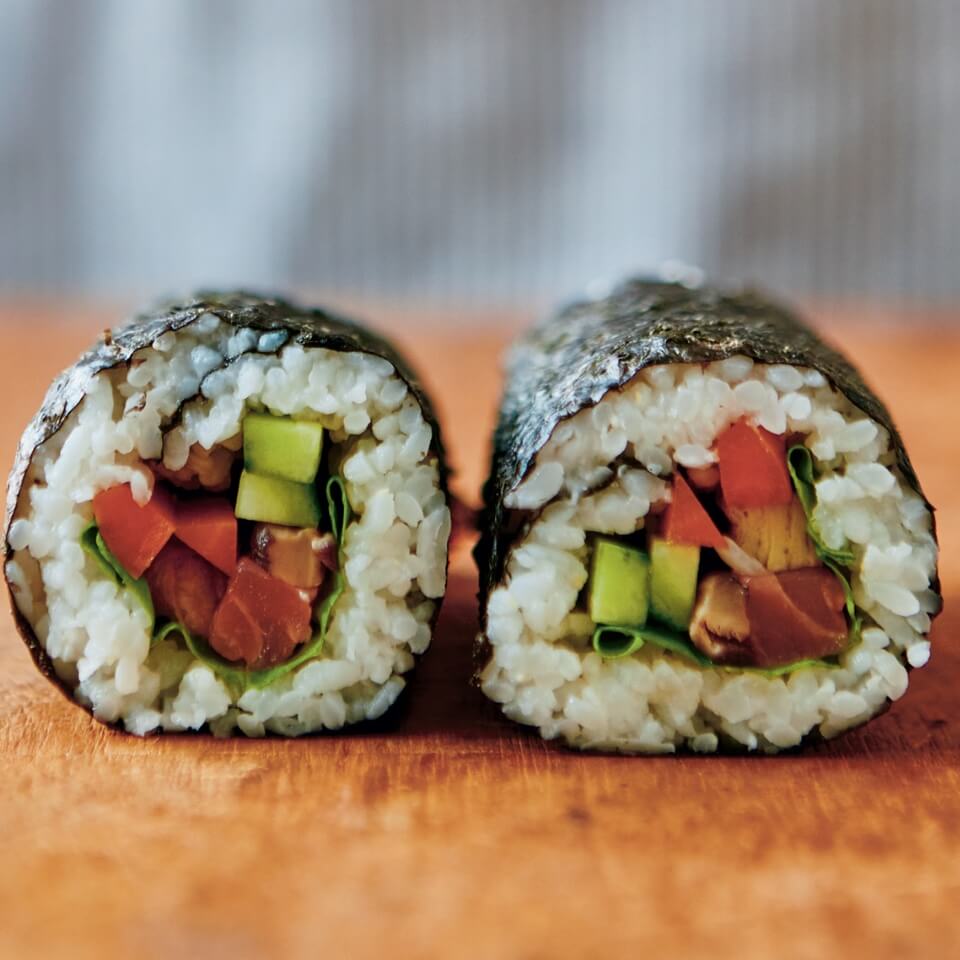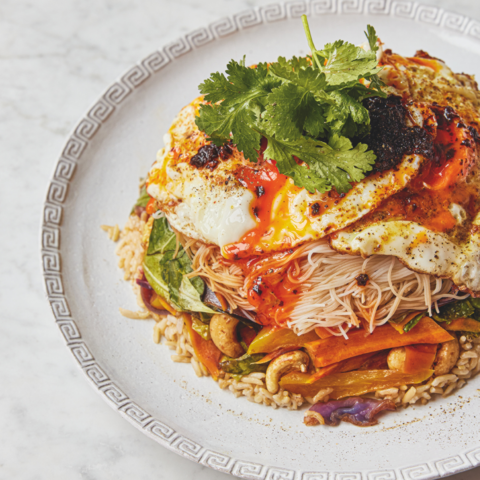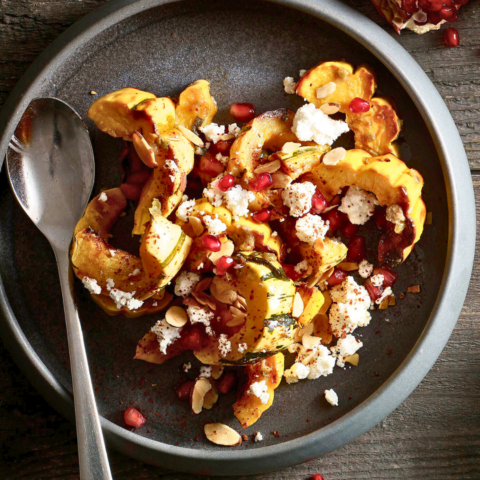In her book Gohan: Everyday Japanese Cooking, Japanese-Australian food writer Emiko Davies shares an in-depth tutorial for creating authentic sushi rolls at home. The technique may seem complicated, but practice makes perfect – and you can experiment with the fillings to keep things interesting. Davies writes:
“Futomaki is one of those things that is brought to parties or picnics and that everyone loves for its colours and flavours. It is more often homemade, unlike nigirizushi, which is usually eaten in a sushi shop. Each household has their own favourite sushi fillings; these are mine, although my mother often includes strips of blanched spinach, too, for extra colour (you could use about 5–10 strips for a large futomaki roll). Feel free to add any of these other popular ingredients: kanpyo (gourd strips), ginger pickles, strips of pickled daikon (the bright yellow takuan pickle), tofu, crabmeat, cooked shrimp, raw tuna or salmon sashimi, cut into strips, or avocado. You could also use ready-made sushizu (sushi vinegar), but if you don’t have it, you can find the recipe below.”

Sushi Rolls
Ingredients
Rice
- 1½ cups Japanese short-grain rice
- 1¾ cups water
Sushizu
- ½ cup rice vinegar
- 3 tbsp sugar
- 3 tsp salt
Marinated Vegetables
- 6-8 dried shiitake mushrooms soaked in hot water for 20 minutes
- 1 carrot peeled and cut into sticks
- 1 tbsp soy sauce
- 1 tbsp sugar
Rolls
- 4-8 leaves butter lettuce or shiso
- 1 cucumber seeded and sliced lengthways into sticks
- 4 sheets of nori
- tamagoyaki (Japanese egg omelette) roll cut into strips (optional)
To Serve
- soy sauce
- wasabi
- pickled ginger
Instructions
- Wash the rice in cold water 2 to 3 times, swirling the rice with your hands and then draining each time, until the excess starch is washed off. Place in a small, heavy-based pan that has a tight-fitting lid along with the measured water. Cover and bring to a gentle simmer over a low heat, then cook for 15 minutes, or until the water seems all absorbed. Remove from the heat and keep the lid on, allowing the rice to steam for a further 15 minutes.
- For the sushizu, heat the vinegar, sugar and salt in a small saucepan until dissolved – do not let it boil. Set aside (this will keep in a jar in the fridge for 3 weeks if not using immediately).
- When ready to dress the warm rice, place in a wide and shallow bowl (even better, a handai – a special Japanese rice bowl, which is made of cypress wood and absorbs excess moisture), pour over about 1⁄4 cup (or to taste) of the sushizu for the above amount of cooked rice and mix through using a spatula in a cutting motion so you do not squash the rice grains. It helps to fan it while doing this to help extra moisture evaporate, until the rice has cooled slightly. It is important not to squash the rice while doing this, or make it soggy with the added vinegar, so it is useful to do this with an extra set of hands: one of you fans the rice, while the other carefully distributes the vinegar and turns the rice over so it has a chance to cool.
- Sushi rice should be body temperature when making sushi. The number one rule is never put it in the fridge, the grains go very hard and the texture will be ruined.
- For the marinated vegetables, remove the shiitake mushrooms from their soaking liquid (reserve the liquid). Slice off the stems and slice the caps thinly. Place in a small saucepan along with the carrot sticks, soy sauce and sugar, then add enough of the shiitake soaking water (filtered through a tea strainer, if necessary) to cover. Simmer until the liquid is reduced and the vegetables are very soft, about 15 minutes. Drain and set aside.
- Nori has a smooth side and a slightly rough side. Place the smooth side face-down on a bamboo rolling mat. Spread the sushi rice over the entire sheet of nori (about ½ in/1 cm thick), leaving just the top 3⁄4 in/2 cm of the seaweed and the bottom 1⁄4 in/5 mm bare. The rice should go all the way to the edges to the left and right.
- Add your fillings in a line running left to right in the centre of the nori. You can choose any combination of fillings. If using leafy greens like shiso or lettuce, I like to lay these down first and then lay the other fillings on top.
- Now you have to simultaneously hold the nori to the bamboo mat with your fingers and carefully roll the mat towards the top, using your middle, ring and pinky fingers to hold in the fillings as you roll over – all while keeping the roll tight. As you reach the end of the nori sheet, make sure to lift out the bamboo mat so that the nori is adhered to itself. Use the mat to help tighten and shape the roll. Don’t squeeze too hard, but while the bamboo mat is still around the roll, you can use this as an opportunity to check that the filling is centred and everything looks good. It sounds harder than it is!
- Once you have rolled the nori well, unroll the mat and place the sushi roll on a chopping board. Wet your sharpest, large kitchen knife with a damp cloth and cut your roll in half. Wipe the knife again to remove any traces of rice, then cut each half into three or four pieces, according to how thick you would like them. For large futomaki, I usually cut them into eight pieces so that the pieces are not too huge; for smaller rolls, they can be longer pieces, so I cut into six.
- Serve with a small dish of soy sauce, a dab of wasabi and ginger on the side to cleanse the palate.
Notes
More recipes from Emiko Davies
Emiko Davies' easy recipe for shortbread-like matcha cookies glazed with almond icing.
Get the recipe
Emiko Davies' easy recipe for shortbread-like matcha cookies glazed with almond icing.
Get the recipe




















